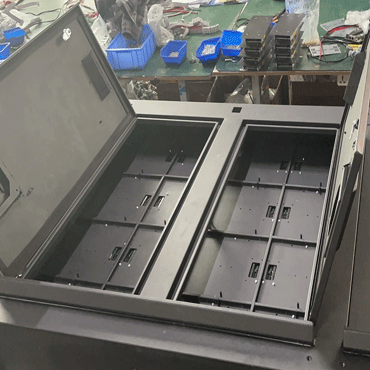An important factor professional gamers must consider when choosing a monitor is its aspect ratio. The concept of aspect ratio is not complex; it’s simply the ratio of the screen’s width to its height.
A few years ago, the commonly used aspect ratios for monitors were 16:9 and 21:9, but now there is a 32:9 aspect ratio. Although you might not be familiar with this, don’t worry. We will explain step-by-step the 16:9, 21:9, and 32:9 aspect ratios and their impacts on professional gamers.
What Problems Can an Inappropriate Aspect Ratio Cause?
The aspect ratio of a monitor affects the display size of the screen. For example, a 21:9 aspect ratio will show more content than a 16:9 aspect ratio monitor. This means that an inappropriate aspect ratio can cause unexpected issues in high-demand e-sports competitions, professional drawing, and other areas.
In the past, some older monitors used 4:3 or 5:4 aspect ratios, but they are now uncommon. These aspect ratios are mainly used in industrial control settings.

About the 16:9 Aspect Ratio Monitors
The 16:9 ratio consists of 16 units in length and 9 units in width (height). These units can be pixels, inches, millimeters, etc., depending on the device. It is the most commonly used ratio for TVs and computers, and it is also the standard image format for 1080p, 2160p, and 4320p resolutions.
Why 16:9 and Not Others?
Some might wonder why the 16:9 ratio was chosen over others like 10:5 or 8:7. It’s a long evolution process.
Early filming equipment primarily used movie film, which adopted a 1.33:1 (equivalent to 4:3) standard, unintentionally created by William Kennedy Dickson during his work. Dickson used 35mm film with holes on both sides (called “Edison perforations”).
He decided that each frame’s height would be 4 perforations, resulting in a 0.95×0.735-inch image. When projected, this size was slightly cropped, eventually producing a 1.33:1 aspect ratio, which led to the early 4:3 screen.

In the late 1990s to early 21st century, the rise of computer usage prompted improvements to the 4:3 ratio, leading to the global popularity of 16:10 computer monitors.
Later, researchers found that the aspect ratio of human vision with two eyes is roughly a 16:9 rectangle. Therefore, TVs and monitors were designed following this ratio. The 16:9 ratio can also make the viewing distance within 1–2 meters more comfortable to watch.
About the 21:9 Aspect Ratio Monitors
Having understood the 16:9 definition, the 21:9 definition follows naturally. The 21:9 ratio consists of 21 units in length and 9 units in width (height).

As video resolutions increased, the original 16:9 ratio couldn’t fully meet current demands. Thus, some LCD manufacturers extended the screen ratio from 16:9 to 21:9, making it a commonly used monitor size.
Advantages of 21:9 Monitors
As an extended version of the 16:9 monitor, the 21:9 monitor has many advantages:
Increased Display Area
The 21:9 monitor offers more display area than a 16:9 monitor. This extra space can speed up processing when comparing multiple files or aligning multiple images side by side.
Enhanced Gaming Experience
Some games display the game area based on the monitor size. Thus, this ultra-wide monitor provides gamers with a broader view. Some manufacturers even curve the edges of 21:9 monitors to make the gaming environment appear more realistic, enhancing the gaming experience, especially in racing games.
Disadvantages of 21:9 Monitors
While the 21:9 monitor provides more horizontal space, it might display less vertical space compared to a 16:9 monitor. This can be unfriendly for handling long documents or images.
Additionally, more screen display increases energy usage. Although modern monitors have energy-saving adjustments, they still consume more energy than smaller monitors.
About the 32:9 Aspect Ratio Monitors
Currently, this size is only applied to monitors. The first 32:9 monitor was the Ostendo CRVD 43″ display introduced in 2008. It sparked significant discussion, with both supporters and detractors making headlines.

Later, other monitor manufacturers followed this trend. High-end monitors like the Samsung Odyssey G9 have become popular among professional gamers worldwide.
Advantages of 32:9 Monitors
Double the Width of 16:9 monitor
The 32:9 monitor is twice the width of a 16:9 monitor, effectively equivalent to two 16:9 monitors side by side. However, unlike using two separate 16:9 monitors, a single 32:9 monitor only requires one HDMI cable for all input and output, while two monitors require two HDMI cables.
More Content Display
The wider screen can show more content. In some popular games, the wider the screen, the broader the view, allowing you to spot other players more easily and gain an advantage.
Disadvantages of 32:9 Monitors
Although 32:9 monitors are a good choice for professional gamers or video producers, they have some drawbacks:
Eye Fatigue
As previously mentioned, the 16:9 ratio is optimal for human vision, while the 32:9 ratio is non-standard. Viewing such an ultra-wide screen can cause visual fatigue. No TVs, LED displays, or media currently use this size.
Higher Cost
As high-end monitors, they come with more features and interfaces than 16:9 and 21:9 monitors, making them more expensive. For non-professionals, it might not be cost-effective to spend more on a 32:9 monitor.
Space Occupation
Due to their wider size, 32:9 monitors occupy more space, roughly equivalent to two monitors combined. For students or office workers, their desks might not accommodate such a large monitor.
Compatibility Issues
Some popular games and software might adapt to 32:9 monitors, but less popular ones might not, leading to stretched or distorted images, or even inability to display properly.
16:9, 21:9 and 32:9 monitors: How Should I Choose?
After understanding the origins and advantages and disadvantages of the three monitors of 16:9, 21:9 and 32:9, we will evaluate from these perspectives how to choose the monitor with the most suitable ratio.
Game adaptability
We learned about many games from Steam and found that popular large-scale games are very well adapted to various monitors, whether it is 16:9, 21:9 or 32:9, they can be perfectly adapted, while some use the middle display and leave black edges on both sides to display the picture, which may bring a lack of viewing experience.
If you like to play various types of games, it is recommended to choose a 16:9 or 21:9 monitor. These two monitors are suitable for most games on the market, while 32:9 monitors are only suitable for more popular games.
Software adaptability
In order to verify the adaptability of the software, we installed Windows XP, Windows 7, Windows 10 and macOS through virtual machines for testing. We found that the latest versions of popular software can adapt well to monitor windows of different sizes.

However, if it is an old software version or a relatively niche software, there will be obvious problems. For example, the font will be blurred after the window is enlarged, and some software will even freeze or crash. Obviously, the larger the window and the higher the resolution of the monitor, the poorer the adaptability of the old software.
Video adaptability
Watching videos with a 32:9 monitor will feel better than 16:9 and 21:9 monitors. First, the viewing angle of the 32:9 monitor is wider, and secondly, the details of the picture are more perfect. Therefore, when watching videos, choosing this ultra-wide monitor is a very good choice.
Understanding the origins, advantages, and disadvantages of the 16:9, 21:9, and 32:9 monitors helps in making the right choice. The long-term presence of these three sizes in the market indicates user recognition.
There is no absolute best among them, so here are some tips for choosing:
- 32:9 monitors are more suitable for professional gamers and video producers. 21:9 monitors are better for office use, while 16:9 monitors are ideal for home use.
- Many games or software may not support 21:9 and 32:9 monitors. If unsure, consult the game community or software developers.
- Wider monitors not only cost more but also consume more power, resulting in higher electricity bills. If there’s no special need, consider a 16:9 monitor first.
- Ensure your graphics card supports the monitor. For example, 32:9 monitors usually require more expensive graphics cards to perform optimally.
Conclusion
We’ve introduced the pros and cons of 16:9, 21:9, and 32:9 monitors and summarized some of our experiences. We hope this information helps you make the right choice.



